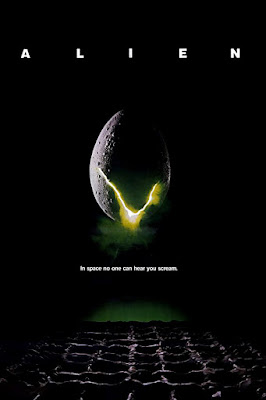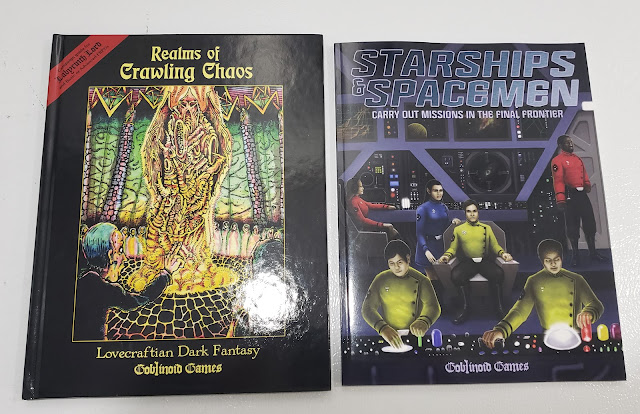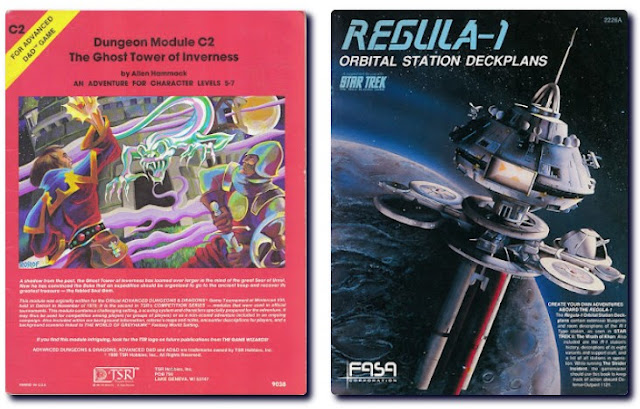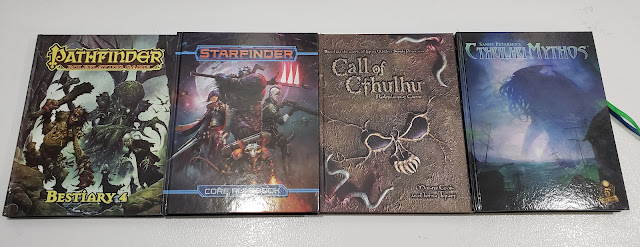So when I was working on The Left Hand Path - The Diabolic & Demonic Witchcraft Traditions there were some other OSR books I thought would be fun to suggest. Not for compatibility, or even "must buys" but for their general coolness and because I often used their material alongside my own when playing my Old-School games.
In the end, I decided not to put them in the book in Appendix N style because I didn't want customers to think they need to buy these other books (though many should buy them and most of you likely already have). Also, I didn't want a book excluded because of time, space, or my forgetfulness.
So instead, I am going to post them here. The reviews are below, but like I said, I think you all know these.
This is not an exhaustive list. Nor is it just a list of favorites. I have plenty of favorites. These are a subset of products that work great with my various witch books or ones I like to use with them. The key here is that they work well with my various witch books. None are needed to play with my witches, but all have something about them I really enjoy. Often compatible classes, spells or something else I enjoyed.
I am not including complete rule sets or adventures in this post. Just extra material I use alongside my witch material in my Old School games.
These are in no particular order, save how I remembered to add them.
The Basic IllusionistThe one thing you can say about the entire OSR Gestalt that despite it all there is still a sense of community and of giving back. Case in point, The Basic Illusionist.
The Basic Illusionist is the brain-child of Nathan Irving and was first seen during the S&W Appreciation Day Blog Hop.
Before I delve into the book itself. Let's take a moment to look at this cover. Seriously. That is a cool cover. I am not sure what made Nathan Irving choose this piece ("Beauty and the Beast" by Edmund Dulac), but I love it. The title works seamlessly, like they were meant for each other. The woman in the foreground is no longer the "beauty" but she is now an Illusionist.
Ok. So the book is overtly for Swords & Wizardry, but there isn't anything here that keeps you from using any Original or Basic-inspired system. I know it works out well in Labyrinth Lord and Basic D&D and it really should work well in ACKS, Spellcraft & Swordplay or any other system. Astonishing Swordsmen & Sorcerers of Hyperborea might be a trick, but they have an Illusionist class already.
Getting into the book now, we have 34 pages (with cover) on the Illusionist class. The book starts off with a helpful FAQ. Personally, I think Nathan should also put that FAQ on his blog as a page so everyone knows why they should get this. The Illusionist class itself is in S&W format, but the only thing keeping you from using this in any other Basic or Advanced Era game is a table of Saving Throws. Copy over whatever the Wizard or Magic-user is using in your game of choice, and give them -1 bonus to saves when it comes to illusions. The Illusionist gets a power or feature every odd level, but nothing that is game-breaking when compared to the wizard. The Illusionist trades flexibility for focus in their magical arsenal. There is even an Illusionist variant class called the Mountebank. Which is more of a con artist. How does it compare to other classes of the same name?
One of the best features of the book is a guideline on illusionist magic and how to play with illusions. Great, even if you never play the class.
What follows next is over 150 Illusionist spells. Many we have seen before and come from the SRD. That is not a bad thing. Having all these spells in one place and edited to work with the class is a major undertaking. I, for one, am glad to see them here. Spells are alphabetical instead of sorted by level. A list of conditions ported over from the SRD is also included. I like that personally. We all love how the older games and the clones play, but in our zeal, we tend to forget that 3.x and later games did, in fact, have some good innovations and ideas; this is one of them.
We end with a couple of monsters and a two-page OGL statement.
Really, this is a fantastic piece of work and really should be the "go to" document if you ever want to play an illusionist.
Since this book was released I have had a chance to try it with various systems. I can say it works great with S&W, Basic D&D, AS&SH (when used with their own illusionist class) and even AD&D.
B/X CompanionThe Game We Never Got.
One of the things I like most about the OSR are the products that don't give me things I already have, but things I have always wanted or never knew I needed. B/X Companion is one of those products.
The product I think I have been waiting for for close to 30 years. Sure, I have had books that have covered the same ground, and books that made this book obsolete, but somewhere, deep in my psyche, there is still that 12-year-old version of me wishing he could take his cleric to 15th level.
The B/X Companion does not disappoint. If this isn't exactly how it was going to be, then I'd be hard-pressed to know what it would have been. I am reading through it all now, and I am purposefully NOT comparing it to the BECMI version of the Companion rules.
The cover, of course, is very much part of the original scheme. The three principle characters, the fighter and the two wizards (or maybe she is a cleric, that could be a "light" spell, though she has a torch too) stand in front of their followers. They braved the dungeon, the wilderness, and now they are ready for the next adventure. So are we.
For those of us who grew up with the Moldvay/Cook Basic and Expert sets, the Companion book feels very familiar. The layout is similar, the flow is similar, and even the art has a familiar feel. If you own the Basic or Expert books, then finding something in the Companion book is trivial. I turned right to the character rules and took a glance at all the tables. Yes, sir, they run from 15 to 36, just like promised. Clerics still top out at 7th-level spells, but eventually they get 9 of them. Wizards still go to 9th level, and get 9 of those too. Fighters get more attacks per round (as they should), and thieves get more abilities.
There are plenty of new spells here. Many look like they take their inspiration from the products that came after, the Player's Handbook or the D&D Rules Cyclopedia, but nothing is an outright copy. It does have the feel like Becker sat around one day and thought, "What are some good spells, and what level should they be.
There are new monsters and advanced versions of some others. The Greater Vampire nearly made me laugh out loud as I had done the exact same thing after reading and playing the Expert book for so long. My Greater Vampire was a photocopy of Ptah from Deities and Demigods with some fangs drawn in. I never claimed to be an artist. The monsters all are appropriate for the levels, though a few more in the 30 HD range might have been nice, but not really needed.
The BIG additions here, though, are the ones that were most "advertised" back in the day. “Running a High Level Game” is great advice for ANY edition of the game.
Related is running a domain and running large armies. Battlesystem would later give us these rules for AD&D, but here they are much simpler to use. Again, this is something to consider for porting to other versions of the game.
I loved the new magic items and can never get enough of them. I also liked the part on the planes and how it is totally left up to the design of the DM. How many people out there will re-invent the Gygaxian Great Wheel for their B/X/C games?
Companion to Basic/Expert Rules. Obviously, this is where it works the best. But there is something here that I don't think others have tapped into just yet. Companion makes the Moldvay/Cook rules a complete game. With these three books, you now have a complete D&D game. The only thing really missing is a "C1" module or maybe a BXC one.
Companion to Labyrinth Lord/Basic Fantasy. The new Becker Companion owes a lot to Labyrinth Lord (LL) and Basic Fantasy (BFRPG). While not directly, these two games showed that there is a market for "Basic" styles of play. Both LL and BFRPG take the modern 1-20 level limit for human classes. Companion is 15 to 36. So some adjustments need to be made. There are a few differences in how each of these books calculates XP per level, and how they do spells. But nothing so complicated that a good DM couldn't figure out.
If I were playing a LL/BFRPG game, I'd go to 15th level and then switch over to B/X Companion for the next levels to 36. OR even go to 20 and use B/X Companion as a guide to levels 30 or even 36.
Frankly, the homebrewiness of it all has me very excited for anyone who has decided to throw their lot in with "Basic" D&D.
Final Tally, I like this book. A lot. It makes me want to pull out my ratty Basic and Expert books and play Moldvay/Cook era Basic D&D again. In the mean time, I think I'll just have to satisfy myself with converting some D&D 3.0 or 4e characters over to Companion, just for the fun of it.
One of the best of the OSR ethos; to give us something we never got but really wanted. Likewise, The Complete B/X Adventurer is also great.
Theorems & Thaumaturgy Revised EditionTheorems & Thaumaturgy is a Free product. The book itself is 66 pages (standard letter) with text and art that immediately remind you of the old Moldvay Basic books. If you have The Complete Vivimancer, then you have an idea of how the text and art look. To me, the art is like psychedelic art-nouveau meets Elric. In other words, perfect for a magic book in my mind.
There are three large sections (Classes, Variant Classes, and Magical Tomes) and an Appendix with nine sub-sections. Like old-school Basic the new spells are all listed with the classes. The book is designed for use with Labyrinth Lord Advanced Edition Characters, but really it can be used with any sort of "old-school" game.
The new Classes are the Elementalist, Necromancer, and Vivimancer. The Vivimancer is, of course, detailed in a later book, but he gets his start here. The classes do pretty much what you would suspect they would do. The Elementalist uses elemental forces, the Necromancer deals with the dead and undead and the Vivimancer. Each class has a good number of new spells (250 in all!) to make using them feel different than your normal "magic-user". Each has spells from 1st to 9th level. All the classes use the Magic-User XP, to hit and saving throw tables, so whatever system you use, you can just use that to put them on the same footing as the Magic-User. While I like the simplicity of this and it helps make the "subclasses" feel like a part of the same Magic-user family. I would have liked to have seen some powers or something for each class. After-all they are sacrificing spell flexibility for what? Power? More variety of spells in their chosen field? I think I would have given them a couple of bonuses at least. But that is fine, these rules are flexible enough to allow all sorts of edits.
For the variant classes there is the new Fey Elf race. This elf is closer to the faerie origins of the elf. The class taken by these elves is the Sorcerer. This class is similar in idea to the D&D 3.0 version; a spontaneous spell caster with magic in their blood. The sorcerer has a couple of new spells and a modified list of spells they can cast. There is an alternate version of the Illusionist as well. This version has a few more spells and has 8th and 9th level spells.
The final section is all about magical tomes. It includes a bunch of unique magical tomes with new spells. The books' histories are also told and which classes are most likely to get use out of it.
The vivimancer gets expanded in its own book, too.
Magical Theorems & Dark PactsMagical Theorems & Dark Pacts (MT&DP) is an Old-school reference for all things Magic-user. The book is designed with what I call "Basic Era" in mind, so the rules from right around 1979-1981, where "elf" is a class, not just a race. Overtly, it is designed for Labyrinth Lord. That being said, it is still compatible in spirit with 99% of all the OSR and books from that time.
The book itself is 6"x9", black and white interior, and 161 pages. So, for a "Class" book, there is a lot here. There are 5 Chapters covering Classes, Spells, Magic Items, Monsters, and a section on using this book with the "Advanced Era" books (and their clones), along with an Introduction and OGL page.
The introduction covers the basics. What this book is, what it is for, and its very, very open OGL declaration.
Chapter 1 is the heart of this book, really. It details 13 magic-using classes. The two core classes, Cleric and Magic-User (Wizard), and 11 new classes.
From the product page: Cleric (warrior-priests) Wizard (classic magic-users with 10 levels of spells) Elven Swordmage (elves from the core rules – arcane warriors) Elven Warder (wilderness elves, guardians of their kin) Enchanter (artists, con-men, and masters of… duh… enchantments) Fleshcrafter (twisted magic-users that work with flesh) Healer (compassionate and tough hearth-healers) Inquisitor (ecclesiastic investigators and master intimidators) Merchant Prince (elite merchants with spellcasting support) Necromancer (you know exactly what these guys do) Pact-Bound (magic-users who sell their souls for power) Theurge (divine casters who learn from liturgical texts) Unseen (thieves with an innate knack for magic)
Clerics are as you know them, but Magic-Users are now Wizards (since everyone here is a magic user) and they get 10 levels of spells. The "Elven" classes replace the "Elf" class in the book. The others are as they are described, but there is more (much more) to them than re-skinned Magic-Users (not that there is anything wrong with wrong that). The classes are re-cast with many new spells, some powers (but nothing out of whack with Basic Era) and often different hit-dice and altered saving throws.
Nearly a third of the book is made up in these new classes.
Chapter 2 covers all the spells. Spells are listed alphabetically with class and level for each spell noted (like newer 3.x Era products). There are a lot of spells here, too. Many have been seen in other products, but some are new. In any cas,e they are a welcome addition. This section makes up more than a third of the book.
The last three chapters take up the last third or so of the book. Chapter 3 covers Magic items. There are 28 new magic items with these spellcasters in mind. Chapter 4 covers some magical creatures. These are monsters listed in many of the new spells for summoning. There aren't many, but they are needed. Chapter 5 is the Advanced Edition conversion materials. It covers HD changes, racial limits, and multi-class options.
So what are my thoughts? Well, you get a lot of material in 160+ pages to be honest. At 10 bucks, it is a good price. For me, it is worth it for the classes. Sure, we have seen variations of these over the years, but it is all here in one place, and they all work well together. The spells are good. At first, I balked at 10th-level spells, but really, they are, for the most part, other people's 9th-level spells, so they work for me.
The magic items are nice, but for me the value is in the classes and the spells.
Who should buy this? If you play old-school games and enjoy playing different sorts of Magic-Users, then this is a must-have book. If you are looking to expand your class offerings or even add a few new spells then this is also a good choice. Personall,y I think it is a great book and I am glad I picked it up.
So many classes and spells here, including another necromancer and a healer. One of the main reasons I have never felt the need to complete my necromancer and healer.
PX1 Basic Psionics HandbookI love Basic-era gaming. Basic/Expert D&D was the first D&D I ever played. Even when I had moved on to Advanced D&D, it still had a strong Basic feel to it. So I was very, very pleased to hear about +Richard LeBlanc's new psionics book, Basic Psionics Handbook. If you have been reading his blog, Save vs Dragon, a lot of what is in the book won't be a surprise, but it is all great stuff. Even then there are things in the book that are still a treat and a surprise.
The book itself is 58 pages (PDF), with a full-color cover and a black/white interior.
The book covers two basic (and Basic) classes, the Mystic and the Monk. Both use the new psionic system presented in the book. The system bears looking at and really is a treat.
Overview. This covers the basics, including how psionics is not magic and how attributes are used. It's a page of rules that slot in nicely with the normal Basic rules. The basics of psychic power, including Psionic Level and Psionic Strength Points (PSP), are introduced.
Mystics are next. Mystics in this case are more molded on the Eastern philosophy of mystics, not the clerical sub-class-like mystics I have detailed in the past. Though through the lens of Western thought. That's fine this is not a religious analysis, this is a game book. This class helps builds the psionic system used in this book based on the seven chakras. Chakras divide the psionic powers into broad groups; something like the schools of magic for spells. As the mystic progresses in level, they open up more and more chakras. Each chakra has seven Major Sciences and twelve Minor Devotions, similar to the old AD&D rules (but not exactly the same, so read carefully). This gives us 72 devotions and 42 sciences. That's quite a lot really. As the mystic progresses they also earn more PSPs and more attack and defense modes. They are the heavy hitters of the psionic game.
Monks are the next class. Monks really are more of psionic using class in my mind and to have them here next to the mystic is a nice treat for a change. Everything you expect from the monk is here. Unarmed attacks, no need for armor and lots of fun psionic based combat powers. The monk does not have the psionic power the mystic does, but that is fine it is not supposed to. It does have a some neat powers from the mystic's list. One can easily see a monastery where both mystics and monks train together, one more mental and the other more physical. The monk has plenty of customization options in terms of choice of powers. In truth it is a very elegant system that shows it's strength with the mystic and it's flexibility with the example of the monk.
This is very likely my favorite monk class.
Psionic Disciplines detail all the powers of the chakras. It is a good bulk of the book as to be expected. There are not as many psionic powers as you might see spells in other books, but this is a feature, not a bug. Powers can be used many times as long as the psychic still has PSP. Also many do more things as the character goes up in level.
Psionic Combat is next and deals with the five attack modes and five defense modes of psychic combat. The ten powers are detailed, and an attack vs. defense matrix is also provided. The combat is simple and much improved over it's ancestors.
The next large section details all the Psionic Monsters. Some of these are right out of the SRD but others are new. Personally, I am rather happy to see a Psychic Vampire. Though it is not listed, I assume that these creatures are also undead and are turned as if they were vampires.
Appendix A deals with something we abused the hell out of, Wild Psionics. At two pages it is the simplest set of rules I have seen for this sort of thing. Also it looks like something that could be ported into ANY version of D&D including and especially D&D 5.
Get out your crystals, Appendix B details Psionic Items. Again, short, sweet and to the point.
Appendix C: Psionics and Magic is a must read chapter for anyone wanting to use both in their games.
Appendix D: Phrenic Creatures turns normal creatures into psionic ones.
Appendix E covers Conversions for Monsters from LeBlanc's own CC1: Creature Compendium.
Appendix F details how to convert any monster into a psionic one.
We end with a a couple pages of collected tables and the OGL.
Bottom line here is this is a great book. Everything you need to play psionic characters and add psionics to your game. Personally I am going to use this to beef up The Secret Machines of the Star Spawn which I also picked up today.
I have played around a lot with various forms of Psionics. For now, this is the one I use most often.
I am a fan of anything B/X and OSE in particular. This zine for Old-School Essentials gives me two elves and some new snake-cult monsters.
I have lots of variations on Dragonborn and Tieflings, but these are good.
This is an update to The Alchemist also by Vigilance Press. For another buck, you get more classes, another 23 pages, and a better-looking layout. A good deal if you ask me. The alchemist is very much like the one from the previous product. Like the alchemist supplement, I might do a multi-class with this alchemist, either as an alchemist-artificer or an alchemist-sage.
The other classes include the artificer, conjurer, elementalist, hermit, holy man, naturalist, sage and seer. Plus, there are some new spells that I rather like.
Designed to be a new psionics system for OSRIC this book introduces the Mentalist class. Powers are divided out among disciplines going to 7th level. Powers are treated mostly like spells, but that works well for adding into OSRIC. Also some psionic monsters are detailed including my favorite (and worth the price of the book) the Doppleganger as a proper psionic monster. 22 pages including cover and OGL. Very nicely done.
Another great set of psionic rules.
-
I have some other posts with adventures and monster books coming up for the future.








































